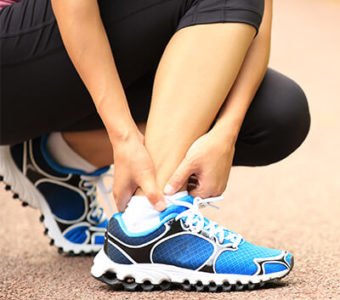Sever’s disease, also known as Calcaneal apophysitis, is a common condition that affects the growth plate at the back of the heel, particularly in children and adolescents. It is characterized by pain and inflammation in the heel area, often causing discomfort during activities such as running, jumping, and walking.
Let’s take a closer look at what Sever’s disease is, its symptoms, causes, and treatment options.
Symptoms of Sever’s Disease
The most common symptom of Sever’s disease is pain in the heel, usually located at the back or bottom of the foot. The pain may be sharp, aching, or throbbing, and it can be more intense during physical activity. In some cases, the pain may radiate to the surrounding areas of the foot. Other symptoms may include:
- Swelling in the heel area
- Limited range of motion in the ankle joint
- Tenderness when touching the heel
- Difficulty walking or standing for long periods
These symptoms typically occur during the growth spurt, which is why it is more common in younger individuals. However, it’s important to note that the severity of symptoms can vary from person to person.
Causes of Sever’s Disease
The exact cause of Sever’s disease is not fully understood. However, it is believed to be related to the growth and development of the foot. During the growth phase, the growth plate at the back of the heel is subjected to repeated stress and pressure, which can lead to inflammation and pain. Some of the factors that may contribute to the development of Sever’s disease include:
- Overuse or excessive activity, such as participating in sports that involve running, jumping, or repetitive impact on the heel
- Improper footwear, which does not provide sufficient support or cushioning
- Genetic factors may also play a role in some cases
It’s worth noting that Sever’s disease is a self-limiting condition and usually resolves as the growth plate closes and the foot matures.
Treatment Options for Sever’s Disease
The treatment of Sever’s disease typically focuses on reducing pain and inflammation, as well as allowing the growth plate to heal. Here are some common treatment approaches:
- Rest: Limiting activities that cause pain and giving the heel time to rest is crucial. This may involve avoiding high-impact sports or activities for a period of time.
- Ice: Applying ice to the heel can help reduce inflammation and alleviate pain. It can be done for 15-20 minutes at a time, several times a day.
- Compression: Using an elastic bandage or compression sleeve can provide additional support and reduce swelling.
- Elevation: Keeping the foot elevated, especially when resting, can help minimize discomfort.
- Orthotic Devices: In some cases, a podiatrist may recommend using orthotic insoles or arch supports to improve foot alignment and reduce stress on the heel.
- Physical Therapy: A physical therapist can provide exercises and stretches to strengthen the muscles and improve flexibility in the foot and ankle.
- Pain Management: Over-the-counter pain medications, such as ibuprofen, may be used to manage the pain associated with Sever’s disease.
In most cases, Sever’s disease improves with time and conservative treatment. However, if the symptoms persist or worsen, or if there is a concern about an underlying condition, it is advisable to consult a healthcare provider, such as a podiatrist or orthopedist, for a proper evaluation and diagnosis.
In conclusion, Sever’s disease is a common condition that affects the growth plate at the back of the heel. Understanding the symptoms, causes, and treatment options can help parents and young athletes manage this condition effectively. With proper rest, support, and treatment, most individuals with Sever’s disease can return to their normal activities as the foot continues to develop. If you or your child is experiencing heel pain, it’s best to seek professional advice to ensure an accurate diagnosis and appropriate management.
